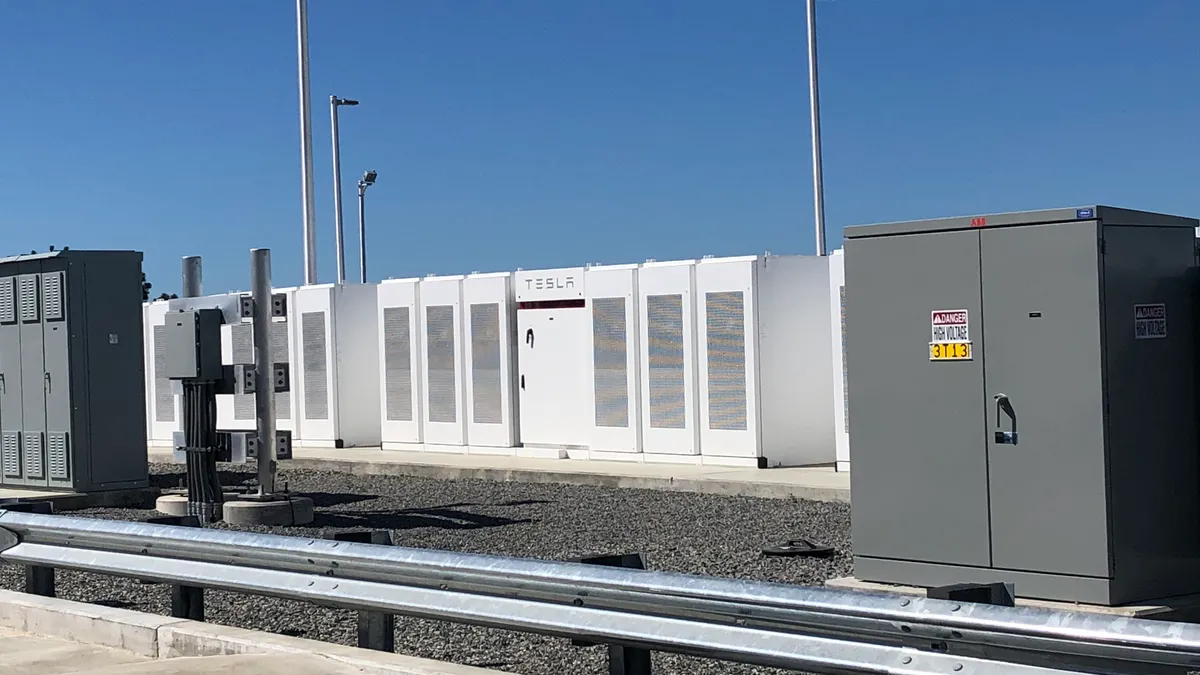New York has one of the most aggressive energy storage targets in the country — originally set at 1.5 GW by Democratic Gov. Andrew Cuomo in June 2018 and later bumped to 3 GW by 2030 in December of that year. All this falls under the state's comprehensive Reforming the Energy Vision (REV) plan, which includes energy efficiency, storage and electric vehicle targets.
The target pushes the state's six investor-owned utilities to procure 10 MW of storage each by the end of 2022, except Consolidated Edison, which must adopt at least 300 MW by that time.
Less than three years away from that short-term goal, two of New York's major investor-owned utilities — ConEd and National Grid — spoke at this year's Distributech conference in San Antonio, Texas, about the lessons learned thus far in storage deployment.
ConEd: Experimenting with financing, grid benefits for the long-game
Storage is essential to New York's long-term climate goals, ConEd REV Demonstration specialist Alison Kling said at the conference. It can be used as grid support, including for particular feeders, real power, reactive power, or as part of broader non-wires alternative goals, but it will also be important in the long-term as the state continues to add more renewable energy onto its grid.
"We have a lot of offshore wind [expected online]. We've got a ton of solar already in, and already coming, so we're going to need storage to firm up those assets," she said. "Getting experience now in how to site it, how to integrate it, is really, really important."
To prepare for the incoming wave of renewable power and the storage that will be necessary to support it, the utility is in the middle of several major projects that will inform the future of the state's distributed grid.
Non-utility owned systems are expected to dominate the utility's energy storage deployments, Kling said, and they've been experimenting with front-of-meter and behind the meter combinations, as well as potential applications with electric vehicles to smooth out load.
One project is a partnership with microgrid and distributed energy developer GI Energy that provides front-of-the-meter storage to customers.
Under the first-of-its-kind dual participation model, the utility is able to get grid services when needed and then GI is able to bid any leftover power into the New York Independent System Operator's market for additional revenue, leading to no changes in customer bills.
"This energy storage service agreement is intended to be the energy storage version of a [power purchase agreement (PPA)]," Associate Director of Development at GI Corina Solis said at Distributech.
The utility also has three mobile battery storage projects, made up of three containers that it'll be able to dispatch across its service territory to serve the summer peak load. ConEd also has a solicitation out for 300 MW of bulk load storage — something the state has dedicated $150 million and counting toward developing.
All of this fits into the utility's broader non-wires solutions portfolio, said Kling.
"We're using DERs, storage, solar, energy efficiency and other things to defer or reduce the need for traditional utility upgrades," she said. "So we have a battery in our Ozone Park neighborhood [in Queens] that we actually used over this last summer ... to help out with grid needs in a constrained area."
Overall, the utility has 8 MW of storage installed, with 250 MW in the queue.
"I guess the key here is there's a lot of different use cases and a lot of different values … [and] you have to try to figure out how to stack all those things together to make the economics pencil out," said Kling.
National Grid: Starting from scratch
One of the hardest parts of utility innovation is setting roadmaps and standards for projects that haven't been tried yet, National Grid Senior Engineer of Distribution Controls and Innovation Maxwell Smith said at the conference.
The utility's first energy storage project is a standalone 2 MW/3 MWh battery installed at a substation built for future capacity, mostly serving as peak-shaving or load-shifting. Its integration into a substation was a first for the utility, and was one of two pilots under a mandated state requirement.
"Many involved in the utility know how conservative our internal standards are and for this type of project we lacked all of that documentation," he said. "So that kind of left us grasping for some straws and working with other units in the business that were kind of outside the typical substation process."
Permitting for one project ended up getting put on the back burner following the lithium-ion battery explosion in Arizona, he said.
One of the major lessons learned from that project and others was the idea of "Day two" management and anticipation, in other words, how will maintenance look once the project itself is completed?
"Who's going to be ultimately tasked with keeping and maintaining this asset and are we working with them upfront to make sure that their needs and their opinions are accounted for?" asked Smith. "That's our responsibility of those working on the project on the front end ... to take those parties all into account."






















